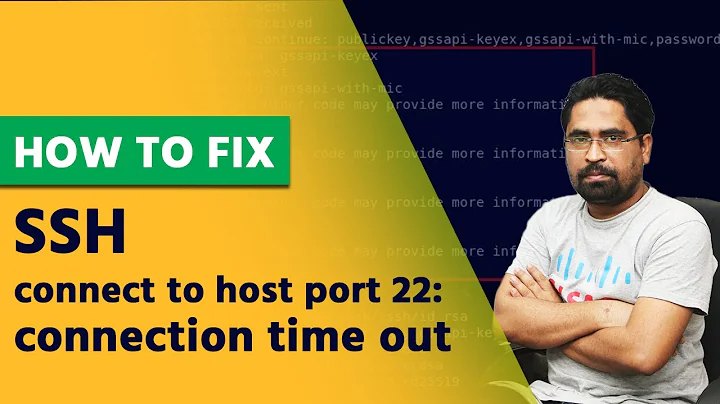Windows 7 firewall causing remote connection to time out; should refuse connection
This is due to a windows firewall feature called "stealth mode". The idea is that refusing a connection instead of timing it out will tell an attacker that there actually is a computer on that IP-Address. With the connection attempt timing out, the hope is that the attacker will ignore the computer. For more information regarding stealth mode see technet.
You can disable stealth mode by modifying the registry as documented here:
To Software\Policies\Microsoft\WindowsFirewall\DomainProfile, Software\Policies\Microsoft\WindowsFirewall\PrivateProfile, Software\Policies\Microsoft\WindowsFirewall\PublicProfile, Software\Policies\Microsoft\WindowsFirewall\StandardProfile add a REG_DWORD named DisableStealthMode with a value of 0x00000001
After doing so you need to restart the windows firewall service for the changes to take effect.
Related videos on Youtube
JT.
Updated on September 18, 2022Comments
-
JT. almost 2 years
The Windows 7 Firewall is running with default options to allow outbound connections and block incoming connections. I have a process trying to connect regularly from within my local network, which is fine. When the program that accepts the connection is running, all goes well. When it's not, Windows 7 Firewall is causing the connection attempt to time out instead of refusing the connection (like it should be doing).
I've tried creating rules to explicitly allow all connections on that port, but it's timing out none-the-less. I'm wondering if the firewall is blocking the
RSTpacket from being sent back? Disabling the public profile completely causes the connection to be refused (as expected) but a firewall rule does not.Here is the rules I've tried so far without success:
Port type, TCP, Specified port 11211, Allow the connection, apply to Domain, Private, and Public
Any suggestions?
Note: When I say "refused" I'm referring to the operating system's response to the connection saying "sorry, nothing is listening." Test this out on your local machine. Open a command prompt and type
telnet localhost 60000. You should see something like this:Trying 127.0.0.1... telnet: connect to address 127.0.0.1: Connection refusedThis is a connection refused. The operating system is "refusing" the request, because (at least on my system) nothing is listening on port 60000.
Now try
telnet example.com 60000. Wait. You'll eventually see something like this:Trying 192.0.43.10... telnet: connect to address 192.0.43.10: Operation timed outSee the difference? There is no host at example.com to reply with a "refused" so your local operating system (e.g. not the server) says "nothing is there, timeout."
Very different. The problem is Windows 7 firewall is not generating the "refused" as it should be. I'd like to find out how to fix this.
-
 Ƭᴇcʜιᴇ007 over 12 yearsIf you fully disable the firewall do you get the expected/wanted behaviour?
Ƭᴇcʜιᴇ007 over 12 yearsIf you fully disable the firewall do you get the expected/wanted behaviour? -
 Ƭᴇcʜιᴇ007 over 12 yearsI'm also a little confused as to what you think would "Refuse" the connection if there's no firewall in the way (due to rules), and no server listening?
Ƭᴇcʜιᴇ007 over 12 yearsI'm also a little confused as to what you think would "Refuse" the connection if there's no firewall in the way (due to rules), and no server listening? -
Ramhound over 12 yearsThe connection being "timed out" sounds like the connection is being refused. I don't understand the difference.
-
JT. over 12 yearsThe connection "timing out" is different than the connection being "refused." A refused response is the OS saying "nothing is listening on that port, so you cannot connect," vs. a timeout which has no response at all. The server takes care of refusals, the client takes care of timeouts. Significant difference there.
-
kreemoweet over 12 yearsWhat is your basis for saying the Win Firewall "should" be sending Connection Refused messages? I've always understood firewalls to be mere filters, allowing or dropping packets, but not generating any traffic of their own.
-
JT. over 12 yearskreemoweet: Right; I think the distinction here is that Windows Firewall assumes that the package should be dropped explicitly if nothing is listening on that port. Instead, the rule should apply even if nothing is listening on that port. For example, if I have a rule to accept connections on port 11211 but nothing is actively listening, the firewall should pass it through to the OS to handle the reject appropriately (instead of ignoring the rule and dropping the packet).
-
-
JT. over 12 yearsThat's exactly it! I can't vote up because I don't have enough reputation, but the fix did exactly what was needed!
Keys: Software\Policies\Microsoft\WindowsFirewall\DomainProfile, Software\Policies\Microsoft\WindowsFirewall\PrivateProfile, Software\Policies\Microsoft\WindowsFirewall\PublicProfile, Software\Policies\Microsoft\WindowsFirewall\StandardProfile Value: "DisableStealthMode" Type: REG_DWORD. Size: Equal to size of the Data field. Data: 0x00000001 means TRUE and 0x00000000 means FALSE.




